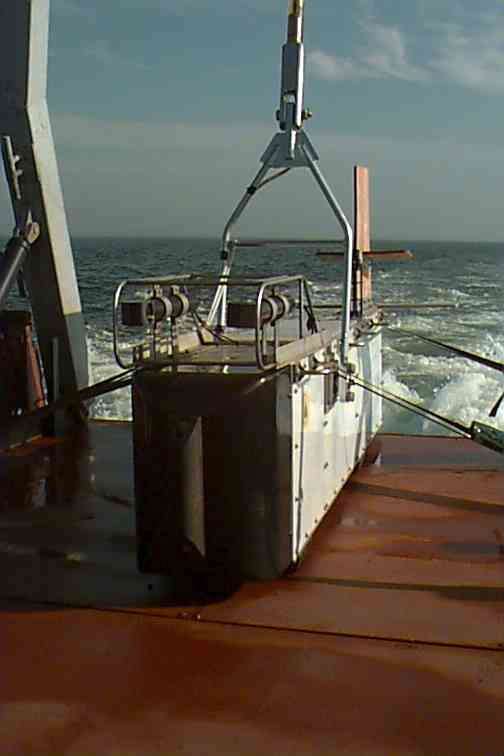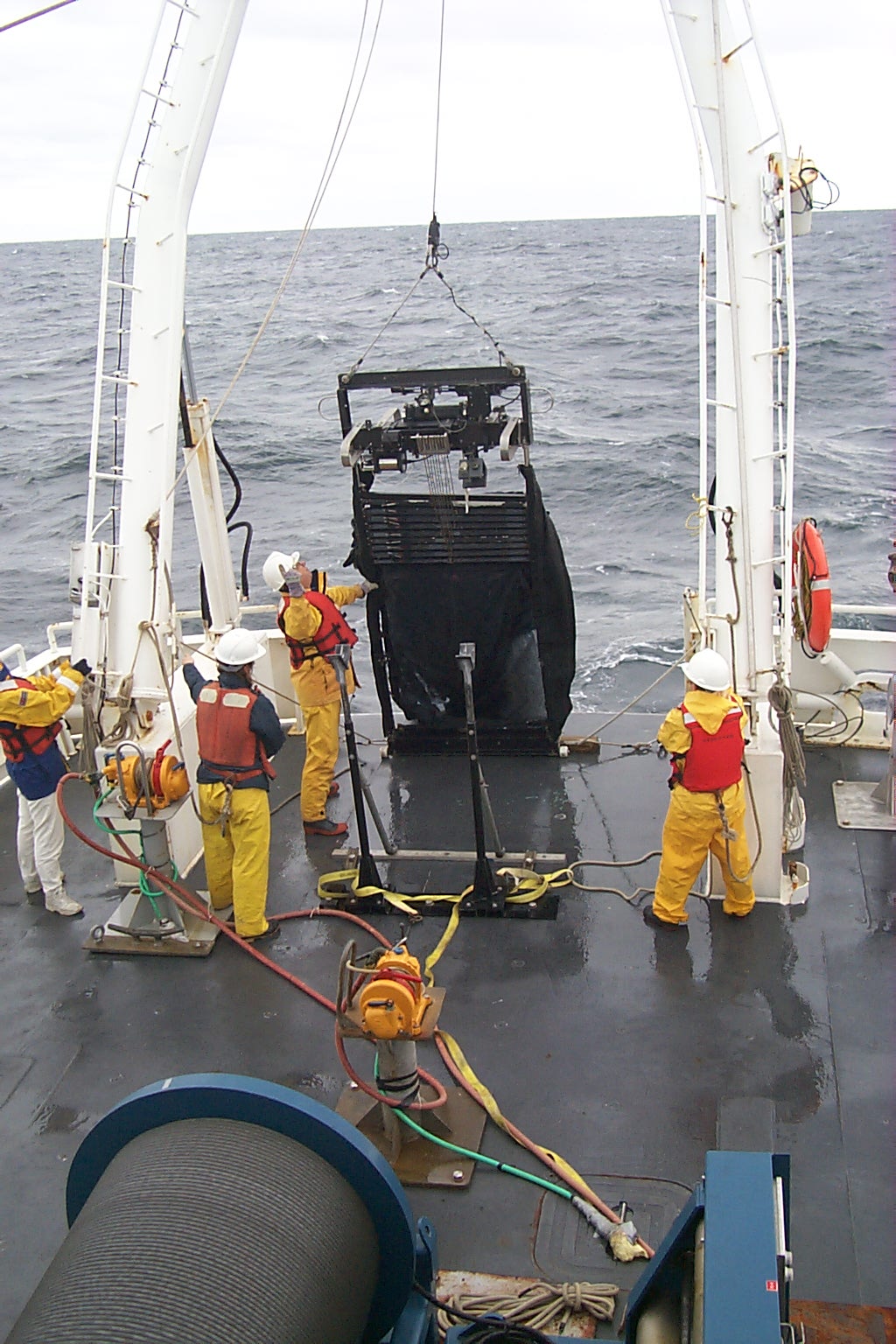Instrumentation
BIOMAPER-II
The BIo-Optical Multi-frequency Acoustical and Physical Environmental Recorder or BIOMAPER-II is a towed system capable of conducting quantitative surveys of the spatial distribution of coastal and oceanic plankton/nekton, near surface bubble fields, and turbulence, as well as field verification studies of theoretical plankton reverberation models. The system consists of a multi-frequency sonar (up-looking and down-looking pairs of transducers operating at five frequencies: 43, 120, 200, 420, and 1000 kHz), a video plankton recorder system (VPR), an environmental sensor system (CTD, fluorometer, transmissometer), and several other bio-optical sensors (down-and upwelling spectral radiometers, spectral attenuation, and backscattering, and absorption meters). The lower four acoustical frequencies utilize split beam technology and are able to make target strength and echo integration measurements. Also included are an electro-optic tow cable, a winch with slip rings, and a van which holds the electronic equipment for real-time data processing and analysis. The vehicle is capable of operating to a depth of 300 m at 4-6 kn, while near the surface it may be towed at speeds up to 10 kn. The system can be operated in a surface-towed down-looking mode, in a vertical oscillatory "tow-yo" mode, or in a subsurface up/down-looking horizontal mode. To enhance the performance and utility of BIOMAPER-II in high sea states, a winch, slack tensioner, and over-boarding J-frame assembly are integrated with the system for deployment and handling. Wire tension records and the power spectra demonstrated the substantial protection that the slack tensioner system provided against excessive shock loading of the cable and the vehicle in sea states that would otherwise prevent work. The scientific capability of the vehicle is illustrated with acoustic, environmental, and bio-optical data sets collected from the Gulf of Maine on cruises in 1997 and 1999 and in the Southern Ocean west of the Antarctic Peninsula in 2001 and 2002.
MOCNESS
The Multiple Opening/Closing Net and Environmental Sensing System (MOCNESS) is a modified Tucker trawl system with a rigid mouth opening originally built by Wiebe et al. (1976, 1985). The original version had a 100 cm x 141 cm mouth opening with nine 0.333 mm nylon mesh nets each 6 m long. Instead of a cable connecting the top and bottom of the framework, stainless steel rods were used on each side of the mouth opening along which the bars supporting the net dropped. This provided a fixed area mouth opening that facilitated calculations of water volume filtered. The system was powered electrically on conducting wire and originally was controlled from a surface deck unit. The current version of the MOCNESS is computer controlled. Sensors include pressure, temperature, conductivity, fluorometer, transmissometer, oxygen, and light. Systems may be built with 1/4, 1, 2, 4, 10, and 20 m2 mouth openings, all with rigid mouths and using the same release mechanisms, sensors, and computer logging and controls.

